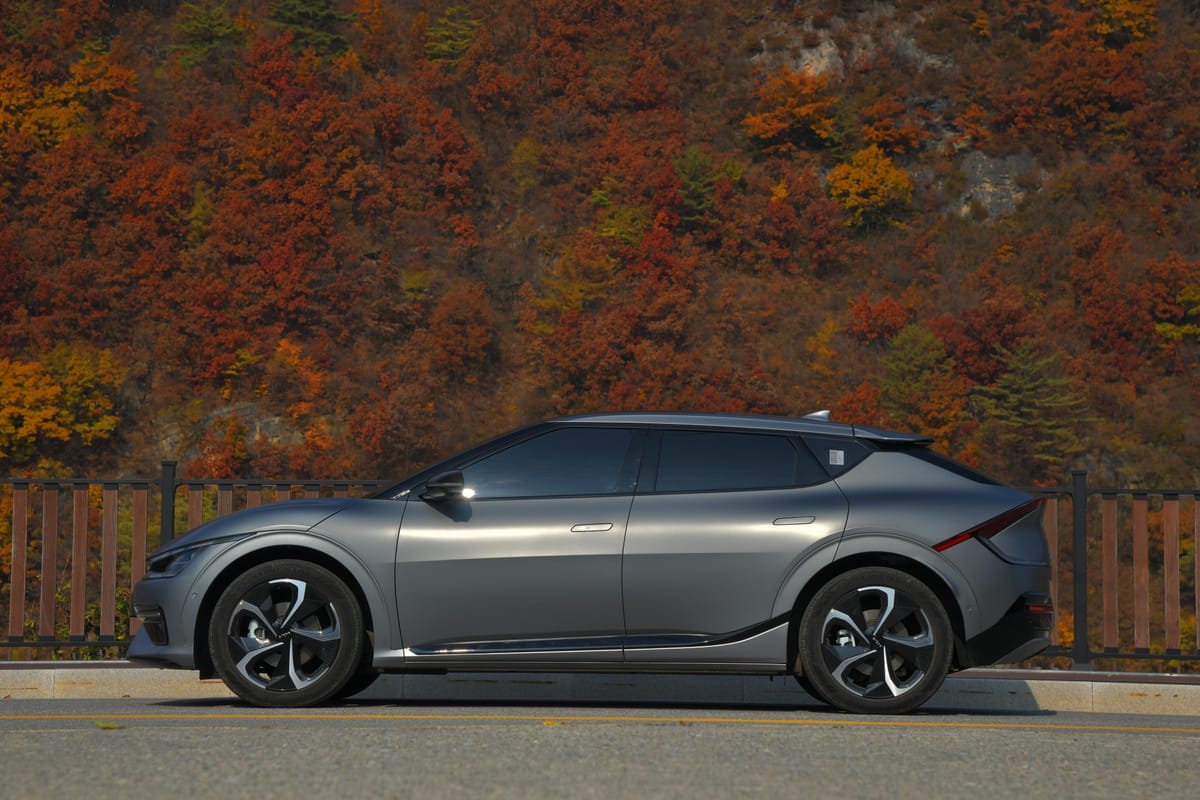Piling Inventory in Car Dealerships: Navigating Slowing Demand

On the surface, last year's record electric vehicle (EV) sales crossing one million units seems like sunny news for automakers heavily invested in an electrified future. However, inventory stockpiles of new EVs gathering dust at dealerships across America cloud that optimism.
This growing gap between manufacturing capacity and sales momentum signals near-term headwinds that could derail the EV boom automakers are betting on. Swelling inventories stem from misaligned production growth and consumer demand. They forewarn of slowing adoption that risks leaving manufacturers with excess capacity.
In this article, we analyze the key reasons behind rising EV inventories despite increasing mainstream interest. We also evaluate production, partnership, and pricing strategies automakers are launching to reignite sales growth in an uncertain macroeconomic environment.
For legacy car companies and startups alike, proactively addressing the inventory glut will be crucial to ride out near-term storms. Balancing manufacturing expansion with demand signals can help accelerate mainstream EV adoption once macro factors improve.
The EV Sales Boom and Inventory Challenge
2023 was a landmark year for EV adoption in the United States. Annual sales crossed one million units for the first time, representing a 50% year-over-year increase. Spurred by government incentives, greater model availability, and climate change concerns, interest in EVs is undoubtedly rising.
However, accompanying record sales is a simultaneous increase in unsold EVs at dealerships. At the end of November 2022, dealers had a 114-day supply of EVs on average compared to the standard automotive inventory level of 71 days. Industry analysts term this the “demand-inventory” gap.
Why are fully-charged EVs gathering dust on dealership lots even as more roll off assembly lines?
Key Factors Slowing EV Sales Momentum
A number of factors are primarily responsive to the reduced sales momentum:
1. Consumer Misconceptions and Hesitancy
Surveys show a majority of car buyers remain apprehensive about switching to electric power. Range anxiety stemming from limited battery capacity and sparse charging infrastructure persists as the number one consumer concern.
With the average EV priced around $66,000, sticker shock remains another barrier. Misconceptions about reliability, environmental benefits, and government incentives also abound.
While early adopters—who care deeply about technology and sustainability—have embraced EVs, the average consumer still views them as novel, risky, and not ready for primetime. Mass adoption awaits demystifying such perceptions through education and experience.
2. Supply Outpacing Demand
In response to ambitious emissions targets and predictions of surging demand, almost every major automaker has announced multi-billion-dollar investments in electrifying their lineups.
However, as new EV variants flood showrooms months ahead of schedule, many consumers still hesitate to swap their reliable gas-powered cars. This mismatch between supply flooding the market and demand lagging expectations is swelling inventory.
3. Lack of Model Diversity
Today’s EV catalog is predominantly sedans and hatchbacks. However, American buyers tend to favor larger vehicles like pickups, SUVs and minivans. With few electric options available yet in those categories, many potential buyers are forced to wait rather than settling for a mismatch.
4. Ongoing Affordability Challenges
While governments and automakers have introduced incentives to bridge the price gap between EVs and gasoline cars, most cost almost twice as much upfront. Inflationary pressures and rising interest rates have further dampened mainstream affordability.
What strategies are dealerships and carmakers employing in response?
Inventory Management Strategies for Automakers
Faced with the vexing reality of unsold EVs, automakers are trying to strike a balance between avoiding overcapacity while continuing to invest in electro-mobility. Here are the key avenues being explored:
Strategic Production Cuts
Ford has halved production targets for the F150 Lightning pickup given tepid demand. Startups like Rivian and Lucid have postponed manufacturing expansion plans. Such adjustments align production with sales momentum. However, they risk supply shortages if demand suddenly accelerates.
Partnerships for Charging Infrastructure
Addressing range anxiety is pivotal to catalyzing adoption. GM and EVgo plan to install 500 charging stations across the country while Volvo and Starbucks are launching a national program. Such partnerships offer charging access where people work and socialize.
Incentives and Discounts
With price being the top consideration for mainstream car buyers, incentives are crucial to closing the affordability gap. Hyundai’s $7,500 discount on the Ioniq 5 and state-level rebates have proven effective demand levers.
Pre-Order Model
Rivian’s adventure pickup enjoys a strong pre-order backlog, keeping near-term production booked out. The pre-order queue gives automakers valuable demand forecasting insights and just-in-time manufacturing flexibility.
Secondary Distribution Channels
Startups like Canoo are exploring innovative distribution tie-ups with retailers like Walmart to increase prospective customer exposure beyond traditional dealerships.
Such multipronged initiatives targeted at capacity right-sizing, charging infrastructure development, affordability improvements, and production flexibility will help balance supply and demand.
Inventory Reduction Tactics for Dealerships
Franchise dealerships have employed time-tested as well as creative gambits to clear ballooning on-lot inventory of EVs. These include:
- Delayed Deliveries: New EV inventory deliveries have been deferred until inventory backlogs ease. This preserves working capital trapped in stagnant models.
- Generous Trade-In Offers: Lucrative trade-in deals incentivize hesitant customers to exchange their old gas-guzzlers sooner. They lower the effective upfront outlay for a new EV.
- Strategic Test Drives: Getting first-time EV shoppers behind the wheel is pivotal. Extended 24-48 hour home test drives arranged through Turo help overcome anxiety and uncertainty.
- Premise Charging Partnerships: To tackle charging infrastructure concerns, dealerships are collaborating with electrical and solar partners to offer discounted home charging station installations.
- Gap Insurance: Guaranteed repurchase plans offered by the likes of Ford assure customers who buy an EV today that the dealer will buy it back at a prefixed minimum value years later. This lowers perceived risks of ownership.
The Bottom Line
Automakers today stand at a pivotal crossroads on the long road to widespread electric vehicle adoption. Near-record EV sales demonstrate promising consumer appetite. However, stubbornly high inventories and production overcapacity highlight lingering mainstream doubts.
The current imbalance between supply and demand signals a crucial window of opportunity for industry players to reassess strategies and steer buyers toward confident EV ownership.
Legacy automakers and agile startups able to elevate the value proposition for potential adopters through improved affordability, charging access and ownership support will surge ahead. Players who can tap innovative distribution channels and partnerships to expose hesitant drivers to the benefits of EVs will also capture hearts, minds and wallets.


